This is a guest post by Lewis Creed, managing editor of the University of Auckland student publication Craccum, which is currently running a campaign for a safer Symonds Street in the wake of a horrific recent crash.
The post has two parts:
1) Craccum’s original call for safety (6 April) which launched a related petition, and
2) the recent update (14 April) on the overwhelming support for the petition.
The header image is one of ours, and shows Symonds St as seen from the corner of Grafton Rd in the evening.
1) Sign our petition to enforce the 30 km speed limit around the University of Auckland City campus
Sign our petition here. We are asking Auckland Transport to do more to enforce the 30 km/hr speed limit on Symonds Street and around the UOA and AUT City Campuses
Students should be able to come onto their campus to attend lectures, study, and have fun with mates without fear of being run over.
That clearly isn’t the case, as the car crash on Symonds Street a few weeks ago tragically proved. Both UOA staff and students were victims. Five were injured, three were hospitalised, and one was put into critical care. Dozens were near misses, and countless more were traumatised by the incident. It could have been a lot worse, and it could have been any one of us who was affected. Eyewitnesses reported the car driving 30 km/hr in excess of the 50 km/hr speed limit.

The actual speed limit for Symonds Street is 30 km/hr.

In fact, it’s 30 km/hr for the whole CBD area. Are you also surprised? I was, too. No drivers stick to the 30 km/hr speed limit on Symonds Street. In fact, the 30 km/hr speed limit on Symonds Street is so unknown that Radio New Zealand (RNZ) got it wrong in their article covering the crash, claiming it was 40 km/hr.
Driving down Symonds Street at 50 km/hr should incur 35 demerit points. Two commutes into town via Symonds Street should suspend most drivers of their license if the speed limit was actually enforced.
Accidents happen, sure. But anyone who’s spent any amount of time at our City Campus knows that Symonds Street is treated like a drag racing strip during the day by irresponsible drivers. I can’t recall how often I’ve had lectures interrupted by the sounds of engines revving and backfiring as those idiots hoon up and down.
And this is not an anecdotal observation; it’s been recorded and reported on before, years ago, that 95% of drivers don’t stick to the legal speed limit on Symonds Street. To this day, they still speed past our uni with seemingly no consequences in sight. Unsurprisingly, even on just a brief search, you can find reports of crashes happening all the time on Symonds Street, year after year.
The consistent lack of enforcement of the 30 km/hr speed limit on Symonds Street meant that what happened last Monday was an accident waiting to happen.
And it makes sense people would speed. Not only is there a lack of speed limit signs reminding people to slow down, but the street is fairly straight and flat, with wide lanes, which encourages “causal” speeding. In the suburbs, streets like this get the Speed Bump treatment to force drivers to slow down. However, in the CBD, there are no such measures in place.
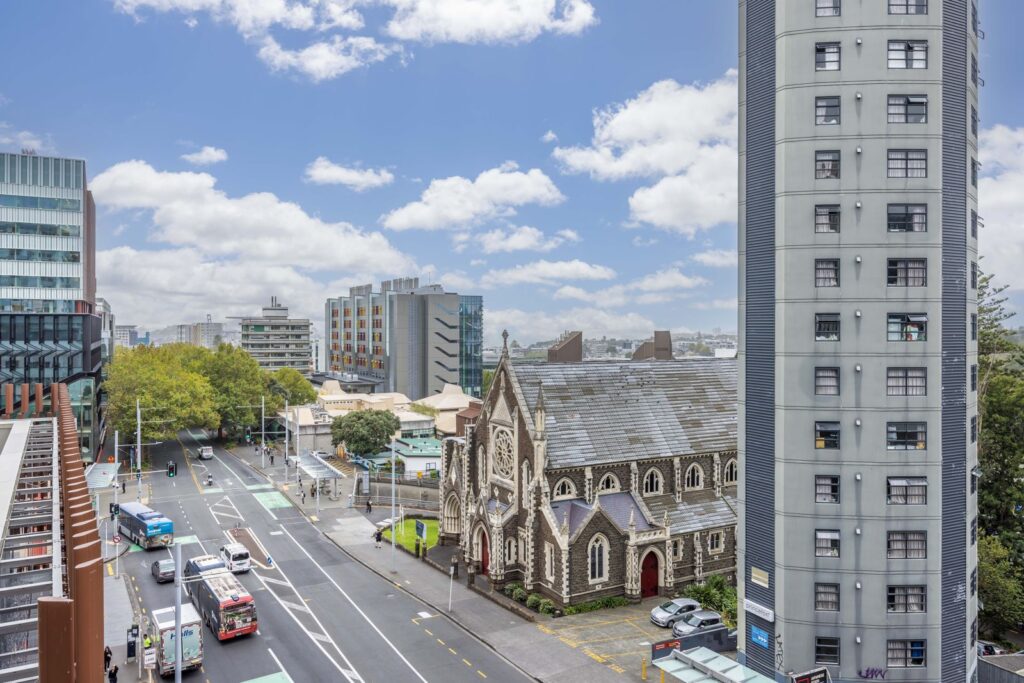
The only regular monitoring the NZ Police currently do on Symonds Street is a red-light camera by Newton Road, about 1.5 km away from where last week’s accident occurred.
“But Symonds Street is pretty much a main road with many heavy vehicles using it, like buses and trucks coming up from the port. Speed bumps would be too disruptive”
Well, what about this counterexample? The Great North Road is one of Auckland’s busiest main roads, about 50,000 cars a day drive over it. But even the Great North Road has a speed bump (pictured below) and a speed cam.
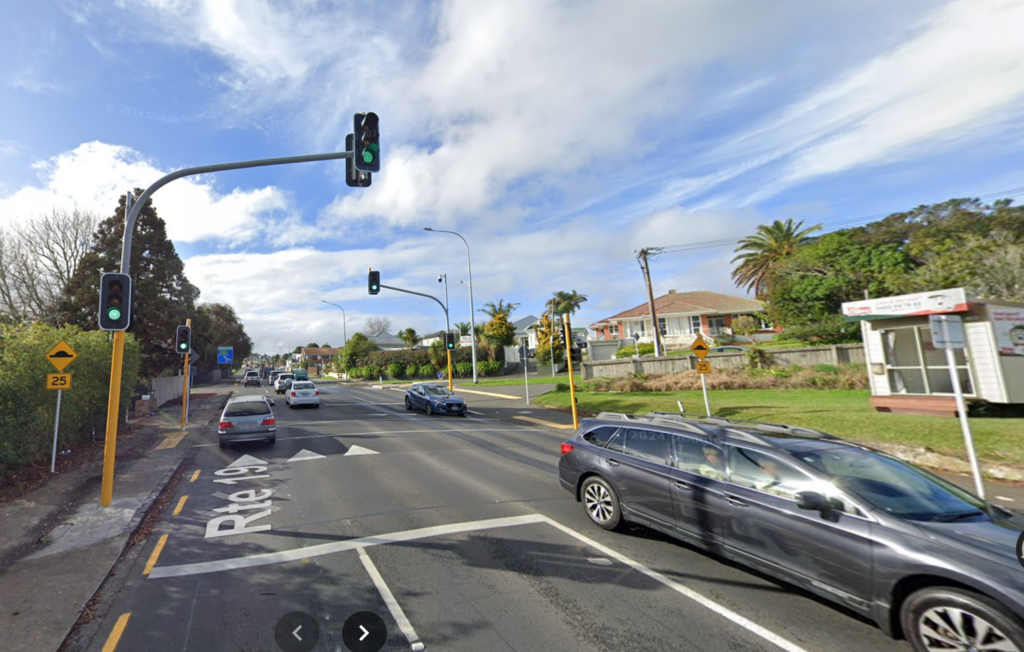
We can go on till the cows come home about how reducing speed saves lives. However, Auckland Transport and Auckland Council should not rest on their laurels after they lowered the speed limit in the CBD to 30 km/hr in 2018. It’s one thing to change a number; it’s another thing to make people actually stick to that number as a limit, not just a speed suggestion. We need more enforcement. More signs, speed cams and speed bumps around our campuses to keep our staff and students safe.
Even our usually politically indifferent University has been super vocal about the importance of speed limits, criticising the Coalition Government‘s policies on increasing the speed limit. Surely, both staff and students can unite together to get Auckland Transport and Auckland City Council to do more to keep our campuses safe from the dangers of speeding.
In response to the recent crash, we have started a petition to the Waitematā Local Board to get Auckland Transport do more to enforce the 30 km/hr speed limit around the UOA and AUT City Campuses, particularly Symonds Street.
Please sign the petition if you also believe there should be more speed limit signage, a speed camera, and even a speed bump crossing installed at the Engineering/Hiwa crossing near the accident site to deter such tragedies from occurring ever again.
2) Symonds Street Speeding Petition Update: Overwhelming Support from UoA Community
Last week, we started a petition calling for Auckland Council and Auckland Transport to do more to enforce the 30 km/hr speed limit around the University of Auckland and AUT, with a specific focus on Symonds Street.
In just a week, we have received an outpouring of support online for the petition. The petition has been signed by 574 people as of the writing of this post and shared 275 times. A special thank you to the generous donors who donated $49 to support our campaign.
Many UOA student organisations have also lent their support and endorsement to the petition, too, including AUSA, Vroom UoA, the Auckland University Women in Science (AUWS), the Eastern Students Association (ESA), Te Mana Pakihi, the University of Auckland Volleyball Club and Princes Street Labour.
We’d like to give a special shout-out to Civil & Structural Engineering Students Association (CESA) and Students of Urban Planning & Architecture Association (SUPA), who have been consulting with us about our upcoming draft speed reduction methods proposal. We have also had the support of some UOA staff members, who have advised us on the direction of the petition.
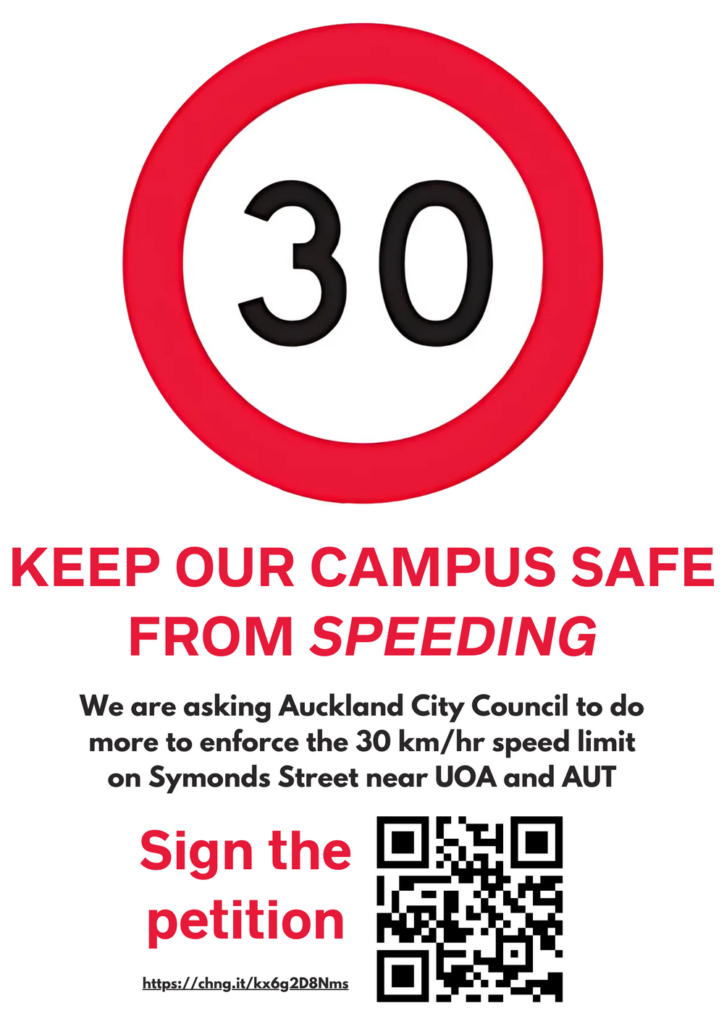
Crucially, we have gained the support of our local ward councillor, Mike Lee, who agrees more could be done to reduce speeding on Symonds Street.
We have also had the endorsement of local Labour MP Shanan Halbert. We are beginning to get some mainstream media attention as NewsTalk ZB interviewed me on Friday about the petition.
Since our first post last week, I have done additional research into road safety on Symonds Street, and I thought I’d share my findings here for your interest.
First of all, to be clear, the current speed limit on Symonds Street is 30 km/hr. Some people online have misinterpreted our campaign as being about reducing the speed limit, but this is not the case. The 30 km/hr speed limit on Symonds Street will also not be affected by the Coalition Government’s new Speed Limit Reversal laws either.
Between 2014 and 2018, 48 people died in car crashes along the whole Anzac Avenue-Symonds Street-New North Road route. As such, Auckland Council have classified Symonds Street as a high-risk crash area as early as 2021. In fact, they planned on re-designing the whole Anzac Avenue-Symonds Street-New North Road route in 2023-24 to make it safer after community feedback placed pedestrian safety on Symonds Street as the top concern.
But this safety upgrade was paused following the 2022 local body elections and hasn’t restarted since. The proposed re-design was ambitious and would have transformed the whole route into something a bit like how Queen Street and Karangahape Road are today.
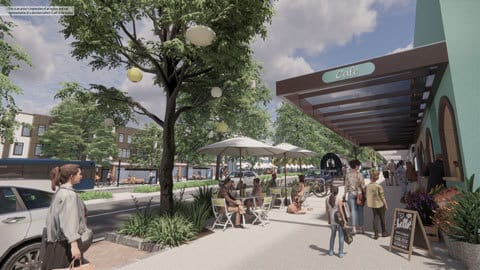
However, it is important to note that lower Symonds Street intersecting the “learning quarter” (the official name for the general UOA/AUT area) was not included in this re-design plan, although it was consulted. Perhaps this might be the reason why the road area around the universities has minimal speed reduction measures in place. Because it was left out of a plan that never came to fruition and has been lost in limbo for the last few years.
[Editors’ note: in the City Centre Masterplan (CCMP), the learning quarter section of Symonds St (Te Wāhanga Akoranga) is envisioned as a transit mall that prioritises public transport, walking and cycling, and access for deliveries, etc, while restricting general traffic. (The design approach is not specified – however, rising bollards in the street are a common solution in similar situations).
Central section of Symonds Street to become a high quality urban environment that prioritises public transport, walking and cycling. Enabled by Access for Everyone (A4E), traffic movements will be tailored to university business access needs rather than a through route for general traffic.
This will unlock new space for people and support the ongoing evolution of the area as a city campus aligned with university development plans.
…back to Lewis’s article now!]
More on the speed reduction methods we are calling for
Since our initial post, we have considered the feedback we have received online from the UOA community on what could be done about speeding on Symonds Street to increase the safety of pedestrians.
Better and more visible signs
Smart signs like these, which show drivers their speed limit and signal to them whether they need to slow down, could be an effective addition to the existing signage on Symonds Street. We believe the culture of casual speeding on Symonds Street is partially driven by ignorance: many drivers simply don’t realise it is a 30 km zone. It is a street that looks like a 50 km zone with minimal signage to suggest otherwise. Installing more signs to remind drivers to slow down could be a non-invasive, cost-effective way to improve pedestrian safety around our unis.
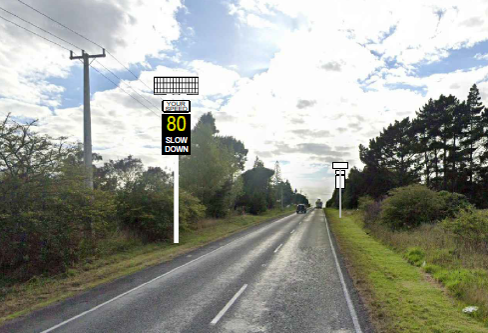
Bollards
Although they were not featured in our initial post, many students online have recommended the installation of Bollards [on footpaths] to protect pedestrians all along footpaths around UOA and AUT and to prevent cars that lose control from mounting the footpath. We think this is a brilliant and non-invasive option to recommend to Auckland Transport, and as such, we have now incorporated Bollards as one of the possible safety measures that our petition calls for.
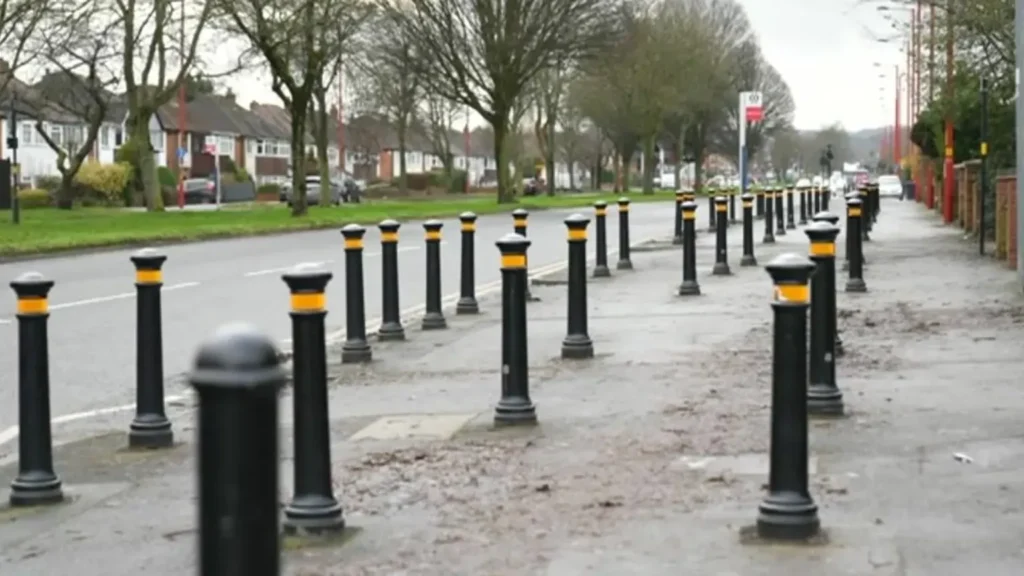
Speed Cameras
Or Safety Cameras, as NZTA calls them, who recently took control of them from the NZ Police. These could be used to fine drivers who exceed the 30 km/hr speed limit on a section of Symonds Street.
However, they’re somehow borderline prohibitively expensive to operate. The total cost of installing and operating just one camera can be as much as $6 million, and that’s when you’re doing it in bulk, too. Crazy right? According to some student feedback we have received, they also give off bad surveillance state vibes, although there are already CCTV cameras pretty much everywhere in the CBD anyway. Safety Cameras are also not foolproof. Yes, they will get drivers to slow down, but only for as long as their vehicle is in the camera’s sightline.
Speed bumps/raised pedestrian crossing
We are also aware many students want to see speed bumps and raised pedestrian crossings installed, particularly at the crossing next to the crash site, between Hiwa and the engineering building. While this would be ideal, we have also had advice from UOA staff that it might not be possible to have these installed due to the freight that uses the route. We will have to wait to see what Auckland Transport says.
On behalf of everyone at Craccum, we want to say a massive thank you to our readers and contributors alongside the 500+ members of the UOA community, staff, students, clubs, alumni, friends, whanau, supporters and generally awesome people who have signed our petition so far.
This post, like all our work, is brought to you by the Greater Auckland crew and made possible by generous donations from our readers and fans. If you’d like to support our work, you can join our circle of supporters here, or support us on Substack!



 Processing...
Processing...
What role did Mike Lee play in stopping the works in 2022 after the election?
The car that sped into Peds a few weeks ago is a terrible aberration, certainly not the norm and idiots like that are not going to take any notice of 30km\hr signage or even speed bumps. I was nearly taken out a year or so ago while walking over a raised zebra crossing. A driver wasn’t looking and sped over the raised crossing narrowly missing me. They only slow down responsible drivers. 50km\hr is perfectly adequate if enforced. Often you can’t drive that fast due to the amount of traffic or conditions anyway. So many pedestrians do not cross at green ped lights, the just amble out into the street any time they feel like. Peds need to be responsible street users also. Bollards or similar are a good idea where necessary. 30km\hr is ridiculously slow. We have road rules for a reason, if everyone followed them and they were enforced I think you’d find they mostly work just fine.
If UoA and AUT students can’t between them all come up with a feasible and affordable proposal for giving effect to the City Centre Masterplan and meeting road network needs for Symonds Street, it would be a sad day. Keep at it and use PPE expertise to back up transportation and urban design expertise.
The speed limit implementation was short-changed by government only funding a few signs, when much more was always needed there.
The Dutch do this better, if people are going faster than the authorities want them to, they redesign the street so it feels like you should go the desired speed when you drive. Not clutter the urban environment with over-signage, not rely on punitive measures, they treat the cause not the symptom, we seem too immature in NZ to follow suit.
That is a myth. The Dutch also rely on punitive measures. It is just so obviously true that most people take it for granted. I don’t know for sure in the Netherlands, but in Belgium on major arterials, traffic cameras to enforce speed limits and red lights are basically a standard part of any traffic light.
For example: you can build continuous footways, which strongly suggest that you cross an area where pedestrians and cyclists have priority when you turn. But nothing in this design actually forces you to give way. And it is really easy to teach drivers to ignore any such hints and just assume they have priority.
Quite to contradiction to claim it’s a myth then say you don’t know. Its not that the Dutch don’t use speed cameras or signs at all, the point is that in a case like Symonds St where it is reported over 90% of drivers speed,the Dutch response would not be, more signs and more fines, they would see the street design as a failure and redesign it. This is not a myth.
Yes, but there is a good chance that there would have been red-light cameras (and potentially speed cameras) in the first place.
Yes. the Dutch are good at making streets that are inherently low-speed environments. Here’s a random suburban street in Utrecht. Tight geometry, street trees and one-way movement restrictions all mean that this is a safe low-speed environment.
Show this to a typical New Zealand highways engineer and their head will explode. “The visibility splays are too tight!” they will say. “And those trees are a crash hazard. Widen it for ‘safety’.”
If anyone knows of a Dutch street that is more like Symonds Street, then add it to the comments.
The random street: https://www.google.com/maps/@52.096181,5.0366275,3a,75y,301.87h,71.41t/data=!3m7!1e1!3m5!1sGszeB6hITmWgz5MugqzmBQ!2e0!6shttps:%2F%2Fstreetviewpixels-pa.googleapis.com%2Fv1%2Fthumbnail%3Fcb_client%3Dmaps_sv.tactile%26w%3D900%26h%3D600%26pitch%3D18.592305077761736%26panoid%3DGszeB6hITmWgz5MugqzmBQ%26yaw%3D301.874266002967!7i16384!8i8192?entry=ttu&g_ep=EgoyMDI1MDQwOS4wIKXMDSoASAFQAw%3D%3D
Thanks. Good on you. I’ll sign.
AT’s legislated responsibility is to provide a safe transport system. AT was given political direction to create a transit mall here (as noted above). AT was given political direction to implement Vision Zero. AT was given political direction to supercharge walking and cycling. AT was given political direction to halve the light vehicle traffic volumes, using modern techniques like low traffic neighbourhoods and A4E.
AT ignored all this political direction, for no reason other than belligerent incompetence.
The injuries sustained were entirely preventable.
Blood is on your hands, AT Board and management.
Thanks have signed and ensured my daughter who started at UoA this year is also aware and can share.
Bollards would have made a difference, but at the end of the day the driver was cooked on something and unable to safely operate a car at any speed.
The most important deterrent here is a criminal one. The longer this methed up feral is in jail, the longer he is off our roads.
No, what we need is a safe, built environment that prevents people with problems harming others.
There are no valid objections to a transit mall that requires drivers to drive slowly and that entirely excludes light vehicles from the sections where the most people are walking.
The deterrent of criminal justice is both necessary and wholly insufficient.
It is self-evident from the facts of the incident itself that increased signage and a lower mandated speed would have made no difference.
More defensive architecture would certainly help and would be welcomed (although it would have to be pretty comprehensive – the route that the offending driver took was precise and determined; requiring him to navigate between some trees that stand between the road and the footpath).
Good points, but I could see that enforcement of the speed limit would make the street less attractive to rowdy drivers in the first place. Do you think that could have made a difference?
Of course, that won’t stop a deliberate attack on pedestrians. That can be stopped by bollards, trees, concrete planter boxes, banning through-traffic and so on.
Agree. From above they were going 80kph so whatever number you put on the speed limit sign would not have made a difference in this case. Bollards would have made a difference if in exact spot. Assume would need to be everywhere to be effective. Probably could start by putting them on intersection corners and where people gather (like bus stops). Or is AT still against them as they may hurt the driver?
Auckland Transport’s Urban Street and Road Design Guide has plenty of suggestions for visual narrowing and a few good points about bollards.
https://at.govt.nz/media/1980686/urban-street-and-road-design-guide.pdf
I wonder if the guidelines would have been enough. The route taken by the driver (based on the NZH article linked in this post) appears to be pretty deliberate. This was not a case where the driver accidentally mounted the curve – it looks like he chose his path with reckless intent (at a minimum).
We need more bollards all over the city – vehicles just park on footpaths now without any sort of consequence. Not only does it make the walking environment crap and unsafe but it is probably damaging the kerbs, footpaths, etc.
That million dollar cost sounds like a lie. Costs of these things in Europe are closer to the equivalent of NZD100,000.
Have you seen the system used in Sweden – with speed camera / detectors linked to an automatically rising / dropping vehicle trap?
https://www.youtube.com/shorts/xrRRpHqzD8U
Seems like a great idea – punishes those that speed, does not punish those that obey the law. Worth exploring?
what happened to the symonds st underpass. and tbh…symonds st should have a full underground connection for UoA.
Clearly the speed limit isn’t the issue, as this driver blatantly went well over 50 and was likely under the influence.
This was a wild one off case where the driver clearly had no regard for the law or consequences.
Yes, and that’s who we have to design for.
If this was criminal incompetence, what would malice look like?
Although rare, drivers like this are hardly ‘one-offs’.
So “Greater Auckland” is anti-car and therefore anti Auckland – everywhere these anti car measures have come in it made life miserable for the vast majority.
Call of this petition
People have suffered life-changing injuries and you are concerned for cars.
How about you reflect on what “misery” actually is.
Well MFD misery is each to their own you can’t just saw slowing people down doesn’t cause misery it does. I would agree with Grays statement it’s miserable crawling through any 30k suburb while a line of cars forms and dangerous overtaking begins. Some people see it as Flow > Lives.
Driving in a traffic jam is miserable.
Remove the traffic – the misery is gone!
“Well MFD misery is each to their own you can’t just saw slowing people down doesn’t cause misery it does”
This is misery indeed. People arguing that speeds suitable for human life in the densest part of our city are causing misery for the poor drivers. Talk about entitlement. Well, that is, in fact, what a lot of the “cars first” people who come here to comment do. Talk about how miserable they are that their enormous entitlement might be reduced a little bit.
If your joy depends on driving fast, go onto the motorway, or even better, onto a speedway. The rest of us want to be able to survive your definition of “joy”.
The misery is in the compromise itself. The cars must not be inconvenienced. To give 1m, 15secs, anything away, is to lose the ideological battle, even if that battle is an invented one.
It’s also futile in the long run. Everyone has to compromise, eventually. So far, it’s been active modes, now it’s the turn of drivers like me. It’s just fairness, that’s all.
hello mount colah, back again are we?
Well said KLK I refuse to sacrifice even 1 second I would see that as losing the culture war GA and other similar orgs started. (And are now losing with some roads having risen 30kmh or more in some cases). This doesn’t need to be a culture war just let democracy decide the speeds or else politics will decide if you live or die in an accident.
Mount Colah i hope your car breaks down and you are forced to walk and use public transport. Maybe then – however unlikely it may be – your spoilt brat cager butt will recognise how meaningless a 30 second delay compared to the inconvenience forced upon those who don’t or can’t drive.
Graham Alder – your comment is the very definition of “Not Getting the Point.”
Let’s put it this way – Auckland University is a small town of around 40,000 people, divided by one road. At any one time, approx half the people are on one side of the road, and the other people are on the other side of the road, but they cross the road frequently, often several times a day. All the people are Pedestrian, every day, walking between classes.
The underpasses and overpasses are highly used – you do not see this as they are below street level or secreted behind other buildings. Yes, many of them get there via cars, buses, cycles or trains in the morning and leave the same way in the afternoon, but 100% of the time they are there, they are without cars, do not want to be bothered by cars, and to be honest, they would rather that there were no cars.
Supporting this does not mean that Greater Auckland is Anti-Car at all, but instead recognises that for this one street in particular, there needs to be a far better solution to divert cars / slow then down / stop hooning / stop drunk driving involving high-speed crashes in the area. That’s not so hard to understand now, is it?
hyperbole much?
‘miserable’ = ‘needs an extra minute to drive a kilometre or two through an area of high pedestrian activity.’
You must be very easy to miserify.
I suggest try to count your blessings. I’m sure life in Auckland isn’t nearly as miserable as in, for example, a war-torn region of Congo or Somalia.
Better yet reverse the speed limit back to 50kmh as that’s what everyone will continue to drive. Also asking AT to do the police’s job is dumb police are the enforcement agency not AT. AT just rushes in stupid speed limits without thinking expecting the police to do something when they also speed down symonds. 30 is not a real speed limit for a road designed to actually go anywhere that’s called a joke speed limit. Sure 30 for Quay st but even busses go 50 as well down symonds. Like it or not if you actually enforce the speed limit you will inadvertently get it raised to 40 through protests. Either let people speed and just pretend it’s fine or else we will elect a govt which sets a minimum road speed of 40kmh. No more 30 anywhere except outside schools your choice.
50+km/h speeds are incompatible with high footfall, such as might be reasonably expected in a city centre university campus. Do we prioritise a slightly faster drive to the next set of traffic lights? Or do we prioritise life?
It’s better to use design to reduce the speed of motor traffic and/or remove it altogether. Here are some examples of design techniques that you can use:
https://globaldesigningcities.org/publication/global-street-design-guide/designing-streets-people/designing-for-motorists/traffic-calming-strategies/
You do realise there are designated crossings along Symonds Street for pedestrians to cross safely. Ones with lights. Too many Peds just don’t cross at crossings or don’t wait for the ped light to turn green. If everyone followed the existing rules then everyone should be safe. Including motorists sticking to the speed limit. I cycled down and up Symonds Street this week and didn’t see a single sign with 30 on it. I had no idea it was supposed to be 30km\hr limit. I do feel that’s too slow personally except when there’s obviously a lot of people around in-between lectures.
Eh, don’t ask that question, Mount Colah/Fassifern/Democracy probably does think running over pedestrians is a good thing and “darwin’s law” in action. All these pro-establishment types are into eugenics and eugenic-adjacent strategies to eliminate the undesirables.
How about having two pedestrian underpasses to reduce the need to cross the traffic lanes.
How about a parallel state highway to reduce the need to drive through a campus?
Oh, already did that – so why is 30 km/h ‘misery’ on Symonds St?
30 km/h for a short bit of city centre driving (assuming not when it’s congested and more like 10 km/h average at best):
I left 5 minutes too late: Misery
I left 5 minutes too early: Relaxing, stressless bliss
Graham Alder and Fassifern explain the car-brain perfectly:
Auckland=Car
Therefore the Journey *is* the Destination.
The Road *is* the City.
My Car is My Home is My Castle!
All hail the Omni-Road, for in movement is there renewal and immortality!
Let the wheels turn and crush the unbeliever!
Silence the heretic with the bellow of horns and unrestricted exhaust!
Pave the way with asphalt to guide the righteous!
Just turn it into an essential vehicle road from Wellesley St to Alten Street, and a shared space (or essential vehicle) on Grafton Rd from Symonds/uni carpark to the motorway onramp. It’ll easily pay for itself in fines, improve PT and emergency services, and even allow a Lime/bike lane each way.
Re bollards, heavy duty planters are probably better, looks nicer, and the weight of the planters + dirt does the same job. Obviously bollards in places for access or tight geometry areas.
PT/emergency services/goods vehicles unaffected.
There should be 0 long distance car traffic on the street anyway, and anything pushing the surge of rideshares away is good in my book.
and STOP the 44 tonne Truck and Trailer units from going down , they have their own road to the port , they like a perv those drivers
Yes, sure is a lack of speed signs to remind people of the 30 km/hr. A quick look on Street View just seems to show the ones entering from outside the city centre.
Similar political dynamics to the Karangahape scaling-back, but with much higher safety risks.
Surely Auckland University itself have an implied liability to their students and staff for building such high pedestrian demand right across this platform? For example bringing in Worksafe for an audit of the pedestrian conditions.
Also does AT have a higher safety responsibility for putting so many high volume buses through here?
This issue is definitely worth the fight so good on them.
Did you know that this started around 50 years ago? I was in engineering school in the 70s. We were sick of being unsafe crossing to the Science Centre across Symonds St, so as a “capping stunt” we painted a pedestrian crossing one night. It soon got painted out by Council.
I was also run down on the crossing further up the road outside the church one time. My leg got knocked by the car, but it wasn’t a major injury.